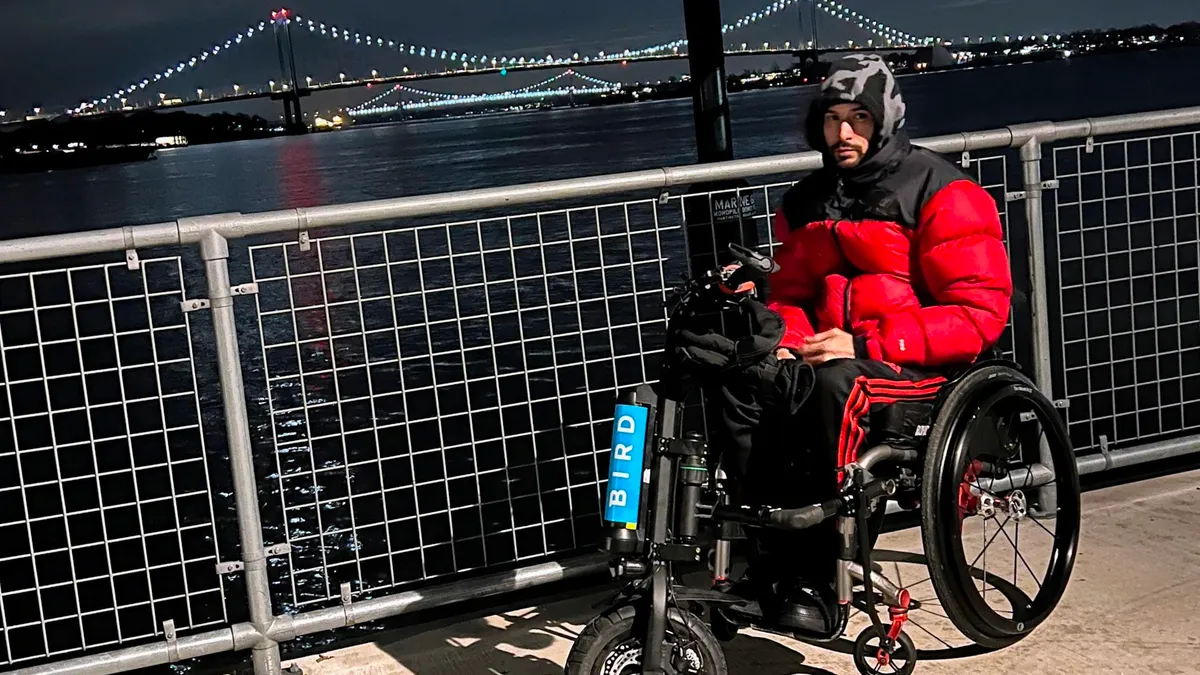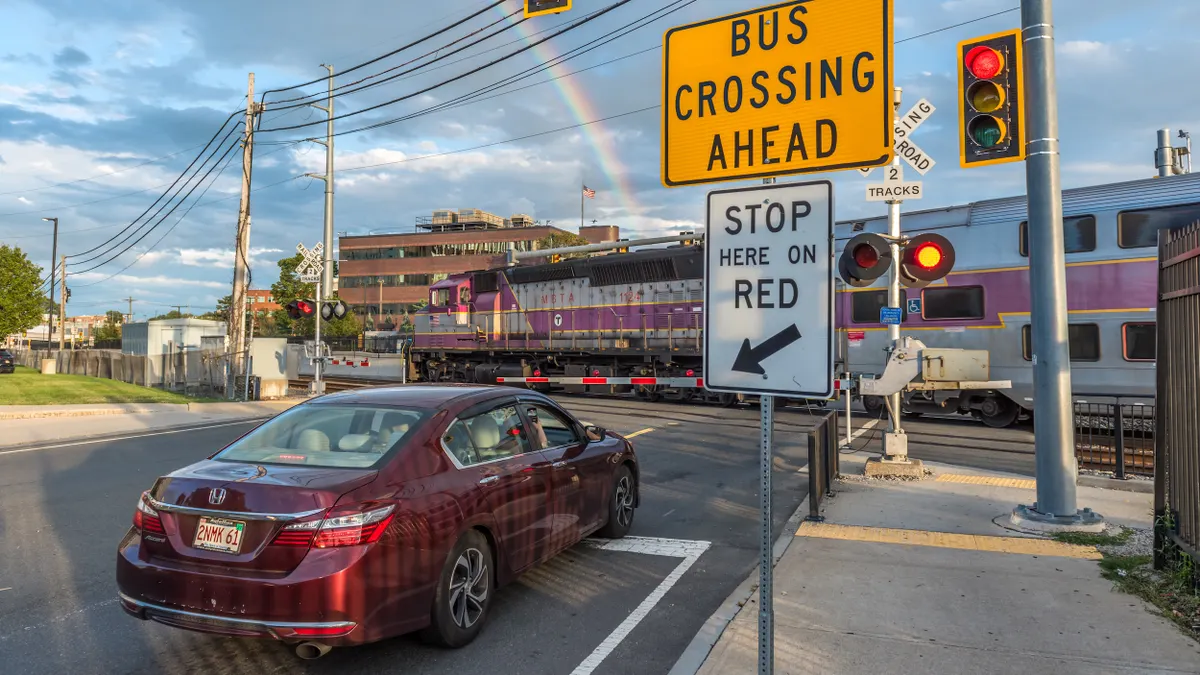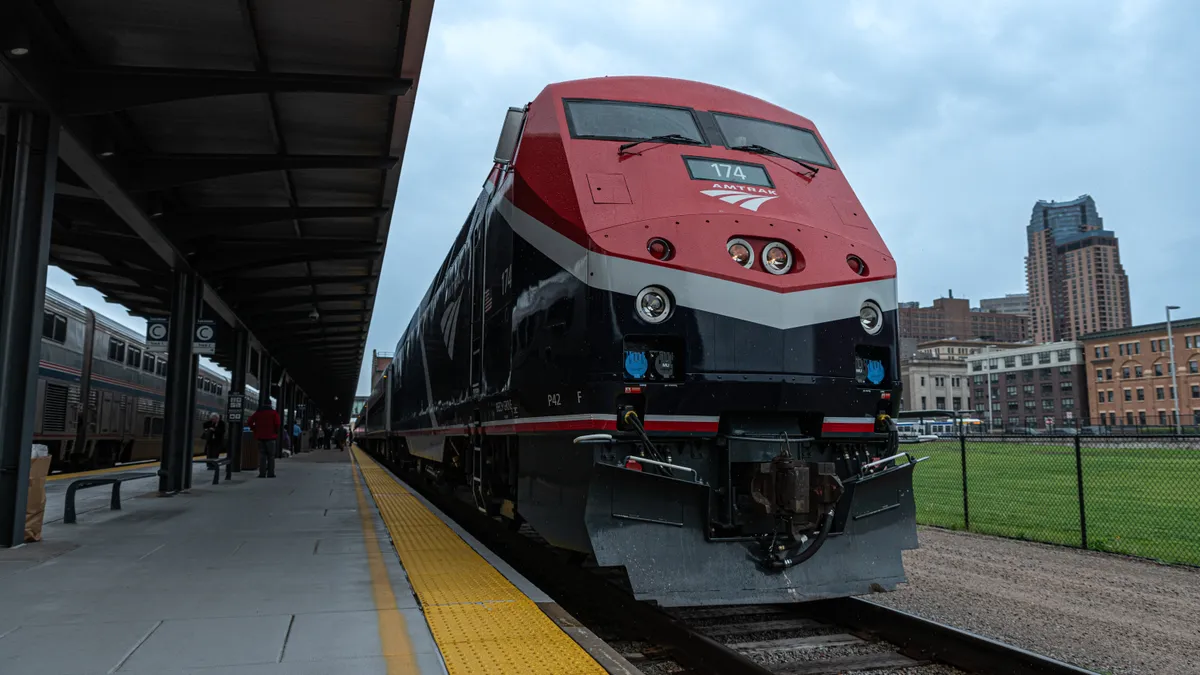Last month, Bird, an electric bike and scooter company, began a free, first-of-its-kind pilot program providing motorized attachments for wheelchair users in the Bronx borough of New York.
It announced the micromobility option soon after New York City’s Department of Transportation stated its plans to enter the second phase of its shared e-scooter pilot program in the East Bronx — a move that will double the number of Bird, Lime, and Veo scooters on city streets.
"The program will give people with disabilities in the Bronx transportation options that are accessible, reliable, and fast," said an NYCDOT spokesperson. "This will help enhance the mobility of people with disabilities, which means they will be able to get to work, doctor’s appointments, and neighborhood recreational centers on time independently."
"This pilot is meant to inform the future of accessible vehicles," said a Bird spokesperson. For this pilot, Bird opted for a home drop-off model, the spokesperson said. Technicians work with all Bronx program participants to install the necessary attachments and adjust speed settings and controls before taking them out for a test ride.
Competitor Lime last year launched its Lime Able program, which provides free, home-delivered adaptive vehicles to users who are not able to operate its e-bikes or e-scooters. The company began offering adaptive vehicles to Oakland residents in 2020 and has since expanded the service to several other cities. A check of its inventory in New York last week showed a three-wheeled, seated scooter available; vehicles available in other cities included one-person and two-person tricycles, seated two-wheeled scooters and seated and standing three-wheeled scooters.
"It’s good to see companies committed to supporting people with disabilities," said Jeff Peters, director of communications for the Center for Independence of the Disabled, New York, referring to the Bird and Lime programs. "While we haven’t personally tried these devices, it’s great to see people with disabilities included, something that is often lacking when it comes to transportation options, especially in New York City."
Eduardo Hernandez, a 31-year-old resident of the Bronx and wheelchair user since 2007, joined the Bird pilot as its first participant after learning about it through a flyer.
"It’s fun, and it helps a lot," Hernandez said. He recently fractured his left wrist, and he’s used the portable attachment more since then to get around, especially up and down the hills around his neighborhood. "It helps me relax my shoulders. I can go shopping, and I can carry more stuff, and I can go way faster than in a normal wheelchair."
Hernandez had to request a few fixes — a faster speed and replacing some broken lights — but after receiving the attachment a month ago, he began recommending it to friends, and one has since joined the pilot program. When NYCDOT expands its e-scooter pilot in the Bronx in June, the Bird accessibility pilot will also expand to make room for more participants.
Monica Bartley, manager of community organizers for CIDNY, and a wheelchair user, said in an email this type of technology is beneficial to people who use manual wheelchairs because it helps them to travel long distances with less effort and could grant them more freedom to travel and sightsee. But she’d like to see New York City provide more equitable transportation with more safe bike lanes and increased public awareness education of the different types of road users, she said.
The pilot comes almost a year after Bird began offering people with disabilities micromobility options through a partnership with Scootaround, a personal transportation company. Through the Bird app, individuals with disabilities in the Bronx; Yonkers, New York; San Diego, and San Francisco can find, reserve, and rent three- and four-wheel scooters with attached baskets or the WHILL Model Ci2, a power wheelchair, for one to 14 days, a Bird spokesperson said.
Christina Asbee, attorney and program director at Disability Rights New York, said the advancement of e-scooter laws in New York City has allowed people with disabilities to use scooters as an assistive mobility aid.
Following legislative changes at the state level, New York City officials passed a law in 2020 that removed provisions restricting the operation of e-bikes and electric scooters and required NYCDOT to launch the pilot program.
"With access to the adaptive scooter devices, people who use wheelchairs can get around the city quicker, in the same way that someone who doesn’t use a wheelchair can," Asbee said. "It definitely equals the playing field in a positive way."
A NYCDOT spokesperson said the accessible micromobility vehicles can be ridden on both the sidewalk and in the roadbed, including in bike lanes. Non-accessible e-scooters must follow the same rules as bicycles and cannot be ridden on the sidewalk.
NYCDOT said it is conducting an accessible vehicle design competition for the three companies, Bird, Lime and Veo, that are participating in the e-scooter pilot program with input from the disability community. The purpose of the competition is to develop accessible vehicles that people with all forms of disabilities can operate, since current accessible vehicles are mostly for people with ambulatory disabilities, and to create a sound that will alert individuals with vision disabilities to oncoming e-scooters.
If the motorized wheelchair attachment technology is successful in New York, CIDNY’s Peters said he could see it replicated and helpful in other cities. In the meantime, he, like Bartley, has plenty of other ideas about how to improve accessibility in the city: "The subway system needs more accessible stations. It’s not an option," Peters wrote. "Subway stations that have elevators must remain open and in working order. Bike lanes and sidewalks need to be clear. [Tactile] strips and curb cuts need to be maintained."
Asbee agreed that New York has a deficiency in accessible transportation options. The city’s on-demand accessible bus service, Access-A-Ride, "woefully underserves the community," she noted.
"Micromobility could be an alternative, but it is not a solution or stopgap measure to avoid addressing the transportation deficiencies people with disabilities face in NYC," said Asbee. "It would be a problem if adaptive e-scooters were offered as a long-term transportation solution for people with disabilities."
Bartley said ongoing technological innovations, including advancements in power wheelchair technology that make travel easier, are helping to address the needs of people with disabilities.
"As people with disabilities voice their needs," Bartley wrote, "research is constantly being done to provide an adequate solution."




















